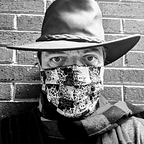The Southern Mythology of “Uncle William” Mack Lee
“I ‘bey de law of man, de law of nature, and vote de Democratic ticket.” — Uncle William’s “Old Age Formula” (Salt Lake Telegram; May 26, 1927)
When he died in 1932, “Uncle William” left behind “the church which he had built, a little pamphlet published in praise of Marse Robert, and the friendship not only of members of his race but a wide circle of friends among the ‘white folks’” according to The Greenville News in South Carolina. In the Old North State, The Roanoke News described him in 1921 as “one of the best known colored men in the South” and a “a negro of the old type, distinguished looking, polite in manner…”
William Mac Lee is widely claimed to have been the body servant and cook for General Robert E. Lee during the domestic insurrection of the 1860s, based primarily (or exclusively?) on his own “little pamphlet” published 53 years after the end of the war in 1918.
During the 1920s, Uncle William was said to have attended every soldiers reunion in the South for those who participated in the “insurgency to preserve slavery and destroy the American experiment” (David Blight). He attended the reunions in Atlanta in 1919 (The Atlanta Constitution, October 7) and Richmond, VA (Charlotte Observer, June 16) in 1922. In 1925, he even visited Stone Mountain, GA “to look on the chiseled face of ‘Marse Robert’” (The Town Talk, LA; November 25).
The Associated Press (via the San Francisco Chronicle, April 13) described him as “the body servant and cook for Robert E. Lee” and an “old darky” who was “the center of a throng of veterans and members of the Daughters of the Confederacy all day and until late in the evening” at the soldiers reunion in New Orleans in 1923.
In 1926, he “spoke at length…to an audience that crowded the chamber to overflowing.” For “the first time since reconstruction days a negro spoke in the halls of the General Assembly of Virginia” (Pittson Gazette, PA; January 20)!
By 1927, the Tallahassee Democrat (November 22) described him as the “90-year old Virginia darkie of slavery times and the body guard and cook of General Robert E. Lee” during a visit to that city that year. His life was musically dramatized for the Weekly Revue TV program in 1927 (as reported by numerous papers across the country).
The “white folks” of the Jim Crow South loved to get selfies with “Uncle William” — for only $0.50 each — and listen to him extol the virtues of Marse Robert and tell them a story about the general’s pet chicken. No, I’m not kidding.
“Uncle William” Mack Lee, “Marse” Robert E. Lee’s body servant throughout the war between the states, announces that he is “home from the Confederate reunion and in good health and spirits and with more money that I have ever had before” after a tour of the South in a “special car” and “they put me up at Rice’s hotel — not with the colored folks one time on the trip — and I had the three best meals every day”…
…He was photographed by two hundred cameras; not including a motion picture camera, but his famous uniform and person wasn’t fixed on the films without a price — fame is too scarce these days to give away. Autographs of departed men of note have an intrinsic value , more so should the privilege of photographing the living — thus reasoned Uncle William and it cost every camera fan just fifty cents for a second’s snap. — The Greensboro Patriot (November 8, 1920)
If you’re starting to get skeptical at this point, you’re not alone— apparently, the Confederate Veteran didn’t even buy Uncle William’s story in 1927…
So take a deep breath, or maybe a tall shot of Cousin Jack?
“Green’s existence had long been an open secret, but in 2016 Brown-Forman, the company that owns the Jack Daniel Distillery here, made international headlines with its decision to finally embrace Green’s legacy and significantly change its tours to emphasize his role.”
So how’d this happen?
“Needless to say, the story of how anyone becomes a heroic role model to a nation that he has made war upon is likely to be a bit complicated, but in this case it is well worth telling simply for what it says about the extraordinary elasticity of historical symbols when they can be bent to the aims of a cohesive, purposeful set of interests in the present.” — “Uncle Jim” Cobb, HUMANITIES, July/August 2011, Volume 32, Number 4.
And as for “Uncle William,” even the Smithsonian Magazine (2011) seems to have fallen for it. Sieg Heil Marse Robert…
“We can scarcely take up a newspaper...that is not filled with nauseating flatteries [of Lee]...it would seem...that the soldier who kills the most men in battle, even in a bad cause, is the greatest Christian, and entitled to the highest place in heaven.” — Frederick Douglass (1871)
